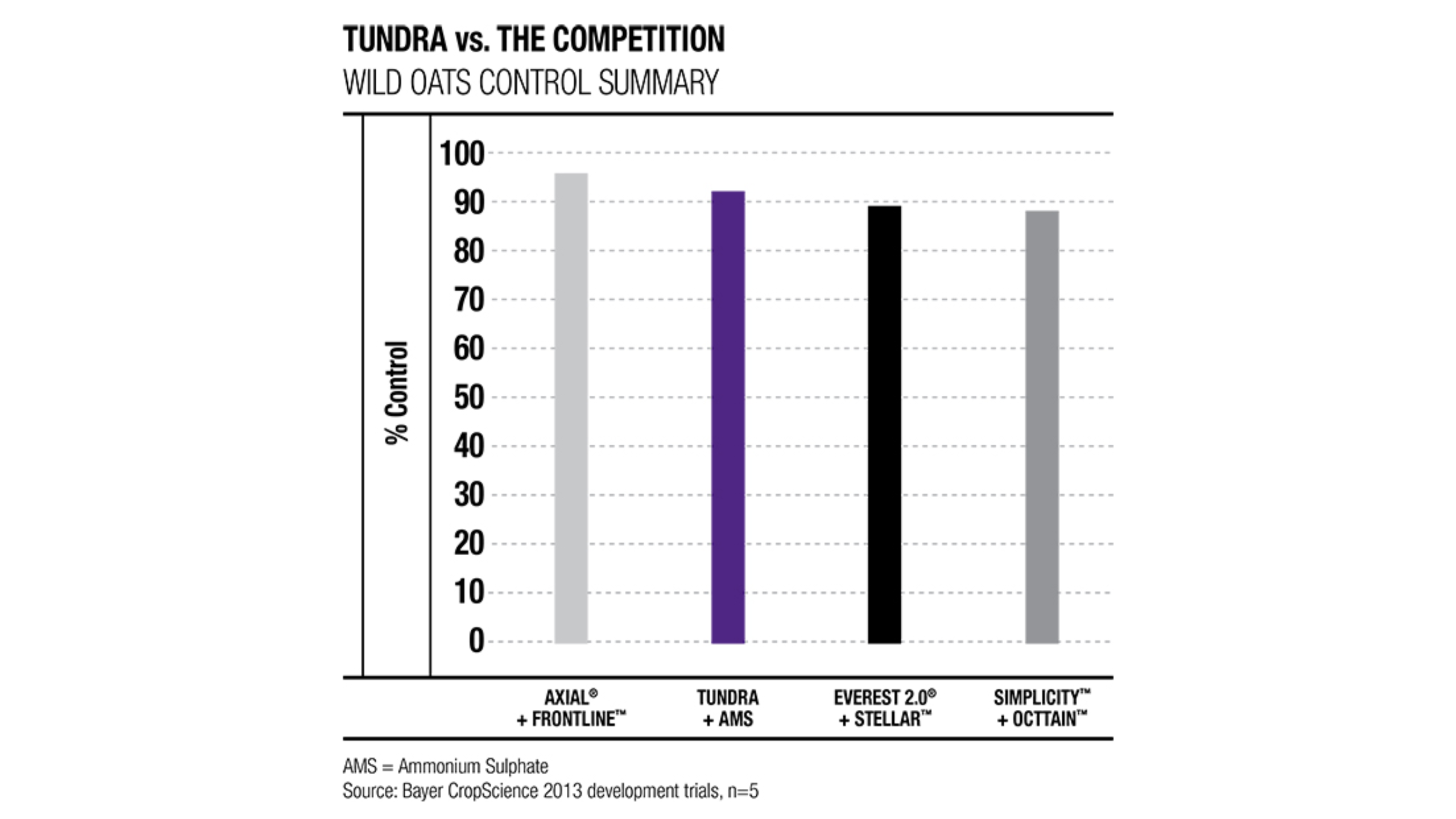Tundra
title-product-highlights
Outstanding formulation that provides enhanced control of grass and broadleaf weeds
Contains innovative Group 27 herbicide, a key broadleaf resistance management tool
Strong grass and broadleaf weed control for your farm, including Group 2-resistant broadleaf weeds such as chickweed, cleavers and kochia
Allows you to move from barley to wheat without stopping
Provides quick and reliable performance
Registered for both ground and aerial application
Pre-mixed for convenience
product-details-heading
| crops | category | groups-active-ingredients | formulation-type | packaging |
|---|---|---|---|---|
Barley Wheat (Durum, Spring) | Broadleaf & Grass Weeds | 6 Bromoxynil | Liquid-Emulsifiable Concentrate | 8.1 L jug = 10 ac. 129.6 L drum = 160 ac. 405 L tote = 500 ac. |
| crops |
|---|
Barley Wheat (Durum, Spring) |
| category |
|---|
Broadleaf & Grass Weeds |
| groups-active-ingredients |
|---|
6 Bromoxynil |
| formulation-type |
|---|
Liquid-Emulsifiable Concentrate |
| packaging |
|---|
8.1 L jug = 10 ac. 129.6 L drum = 160 ac. 405 L tote = 500 ac. |
| weeds-controlled | weeds-suppressed |
|---|---|
Wild buckwheat Canada fleabane Chickweed Cleavers Flixweed | Canada Thistle Dandelion Giant ragweed (with AMS) Round-leaved mallow Perennial sowthistle |
| weeds-controlled |
|---|
Wild buckwheat Canada fleabane Chickweed Cleavers Flixweed |
| weeds-suppressed |
|---|
Canada Thistle Dandelion Giant ragweed (with AMS) Round-leaved mallow Perennial sowthistle |
Performance Data
title-use-mixing


